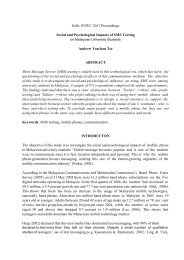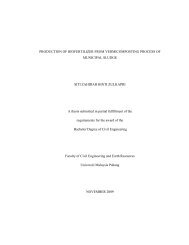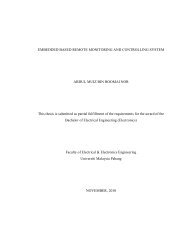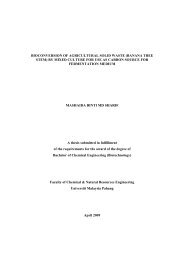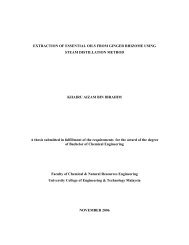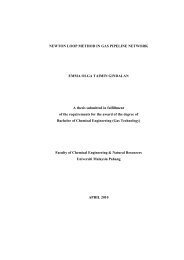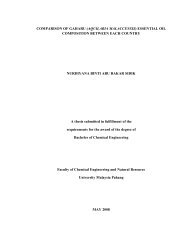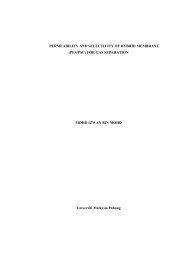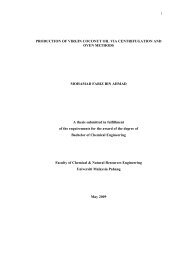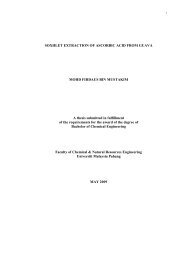CHAPTER 1 - Universiti Malaysia Pahang
CHAPTER 1 - Universiti Malaysia Pahang
CHAPTER 1 - Universiti Malaysia Pahang
You also want an ePaper? Increase the reach of your titles
YUMPU automatically turns print PDFs into web optimized ePapers that Google loves.
3.2 Materials<br />
3.2.1 Polypropylene<br />
Polypropylene (PP), also known as polypropene, is a thermoplastic<br />
polymer, made by the chemical industry and used in a wide variety of applications,<br />
including packaging, textiles (e.g. ropes, thermal underwear and carpets), stationery,<br />
plastic parts and reusable containers of various types, laboratory equipment,<br />
loudspeakers, automotive components, and polymer banknotes. An addition polymer<br />
made from the monomer propylene, it is rugged and unusually resistant to many<br />
chemical solvents, bases and acids. Most commercial polypropylene is isotactic and<br />
has an intermediate level of crystallinity between that of low-density polyethylene<br />
(LDPE) and high-density polyethylene (HDPE). Polypropylene is normally tough<br />
and flexible, especially when copolymerized with ethylene. This allows<br />
polypropylene to be used as an engineering plastic, competing with materials such as<br />
ABS. Polypropylene is reasonably economical, and can be made translucent when<br />
uncolored but is not as readily made transparent as polystyrene, acrylic, or certain<br />
other plastics. It is often opaque or colored using pigments. Polypropylene has good<br />
resistance to fatigue.<br />
IUPAC<br />
Name<br />
Table 3.1: Properties of Polypropylene<br />
poly(propene)<br />
15



